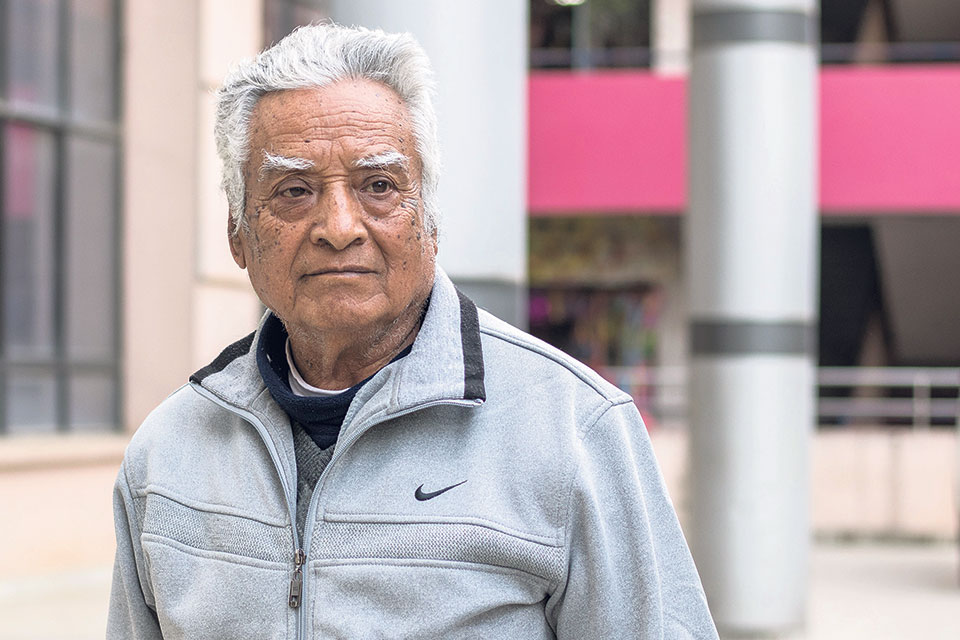Cham: The Dance Meditation (With Video)
5 years ago

5 years ago

5 years ago

5 years ago

5 years ago

5 years ago

He captured color photographs in the late 1950’s long before it actually emerged in Nepal-in early 1970’s.
An esteemed photographer of his time, Shridhar Lal Manandhar dedicated his efforts of lifetime for the love of photography. From landscapes and festivals to portraits, he equally cherished the art with an ardent longing to capture faces of the royals and the commoners.
His raw skills honed further with his deepening passion and increasing opportunities that he encountered. Moreover, it was his access to new equipments that fascinated people and engraved his photography in their minds. An energetic personality at 80, he lately contributed his works in Photo Kathmandu. He has also been awarded with ‘Lifetime Achievement Award’ from Kathmandu Photo Circle and ‘Award of Excellence 2016’ from Photo Kathmandu.
In an interview with My City’s Sonam Lama, Manandhar shared his insights and experiences on photography.
How did you begin with photography?
My father worked as a Librarian in the British Library. I visited the library and assist him at times. I used to look at each of the travelogue and magazine in the library, until one day, I came across a book called ‘Tibetan pictures’. I was immensely enthralled by the landscapes of Tibet, the pictures of people and their cultures. It evoked a sense of deep yearning to portray my culture and people in photographs. I eagerly started taking random pictures with the camera that I had managed to buy from one of my friends. I fancied for latest cameras and searched before I bought any. The most expensive one that I had bought was Hassel Blad for around Rs 15,000 which I had bought from a German friend.
If not a photographer, what would you imagine yourself to be? Why?
I have spent good time in sports since a young boy. Back then, I was a member of New Road Sports Team, which organized several friendly matches and sports competition. I was fond of all the outdoor games and played many for quite some time. However, table tennis grasped my attention more than any other games. In the course of playing the game, photography caught my fancy and I decided to take it for the rest of my life. The game was close to my heart as I also taught my wife to play table tennis. She also participated in an international tennis competition held in China. Had I not been a photographer, I would have played my heart out at sports.
How do you value your archives?
My archives are my well-earned assets. I feel glad to be sharing them with the newer generations. Few years ago, I donated all my archives to Nepal Picture Library. People approached me inquiring on why I gave it away for nothing. I did not seek to generate any financial gain from the works that I did out of my sheer passion for photography. I did it for a cause, for my interest and for the preservation of ancient cultures. My works being remembered by the posterity is the valuable price that I would be generating from my photographs.
How was your experience with Photo Kathmandu?
It was a moment of immense joy contributing my pictures to Photo Kathmandu. It was a heart-warming experience witnessing the past moments when I had actually taken them. I was elated that my works were remembered and exhibited with many other photographers, after my retirement.
Now that you have retired from your work, what memories can you recall the best?
I feel relaxed and at peace thinking of the time I spent living up to my dreams and doing what I had admired the most. I recall many memories from the past. But the moment that has left a great impact in my life was the visit to Kala Patthar in 1975. My passion for photography led me to take a journey in the mountains with a porter and a guide. Upon reaching Kala Patthar, I caught altitude sickness. We then decided to return as my health degraded. After some time, I fell unconscious and was given oxygen throughout the night.
Fortunately, a Japanese doctor examined me and recommended that I returned to Kathmandu as early as possible. I was carried by a yak till Syangboche and was fortunate to board an immediate flight to Kathmandu.

- by Sajira Shrestha

- by Pratyencha Koirala
_20220508065243.jpg)
- by Mimansak Nepal

Leave A Comment